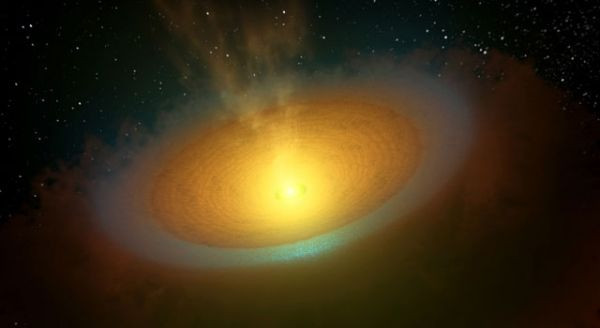Nearby Planet-Forming Disk Holds Water for Oceans

Astronomers have detected a sprawling cloud of water vapor around a nearby developing solar system.
This is a never before seen identification where scientists believe the water vapor is cold enough to form comets, which could eventually deliver oceans to dry planets.
Scientist have found thousands of Earth-oceans worth of water within the planet-forming disk surrounding the star TW Hydrae, 176 light years away in the constellation Hydra, closest solar-system to be.
As water is the essential ingredient for life, “this tells us that the key materials that life needs are present in a system before planets are born,” said Ted Bergin, University of Michigan astronomy professor and co-author of a paper on the findings published in Science.
“We expected this to be the case, but now we know it is because have directly detected it. We can see it.”
The greater the availability of water in disks for icy comets to form, the bigger the chances that large amounts will eventually reach new planets through space impacts.
In detecting the chemical signature of water, researchers used the Heterodyne Instrument for the Far-Infrared (HIFI) on the orbiting Hershel Space Observatory.
Herschel is an orbiting telescope that allows astronomers to observe at the far-infrared wavelengths where organic molecules and water emit their chemicals, a European Space Agency mission with NASA participation.
This formation is believed to be similar to our own solar system’s formation billions of years ago.
“The detection of water sticking to dust grains throughout the planet-forming disk would be similar to events in our own solar system’s evolution, where over millions of years, these dust grains would then coalesce to form comets. These would be a prime delivery mechanism for water on planetary bodies,” said principal investigator Michiel Hogerheijde of Leiden University in the Netherlands, according to the University of Michigan News Service.
According to NASA officials, if TW Hydrae and its icy disk are representative of many other young star systems, then the process for creating planets around numerous stars with an ample amount of water throughout the universe appears to be in place.
Published by Medicaldaily.com



























